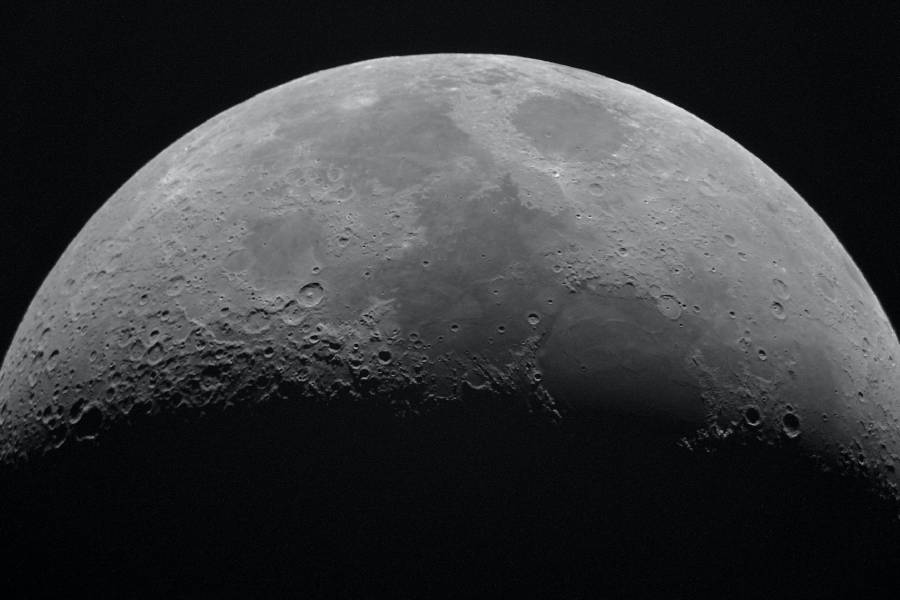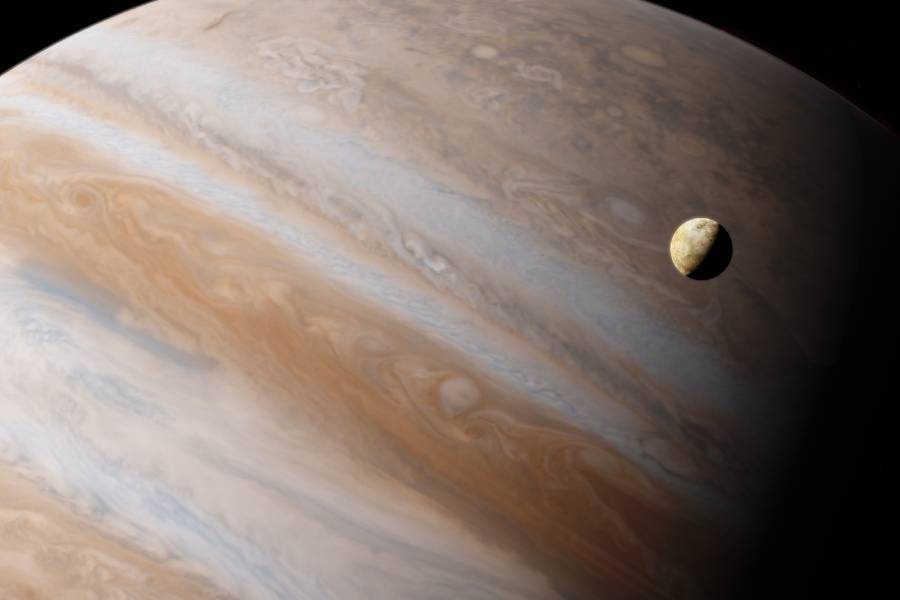Some planets in our solar system stand out for having numerous natural satellites or moons orbiting them. When gazing at the breathtaking array of lunar objects surrounding certain planets, a captivating question arises: Which planet has the most moons under its orbital influence? How many moons are in our solar system?
This article will explore that inquiry in depth as we count down and rank the top five planets with the most confirmed moons. We will uncover which world has the most satellites currently, including some recently discovered additional companions.
Which Planet Has the Most Moons?
Jupiter has the most confirmed moons of any planet in our solar system, with 80 to 95 natural satellites. Jupiter’s enormous size and gravity allow it to capture objects readily. Once these objects enter Jupiter’s orbital sphere, Jupiter adds them to its collection of moons.
Saturn comes in second, with 62 documented moons. Jupiter and Saturn have strong gravity. They also have an abundance of stray asteroid fragments. These fragments consolidate as new moons. This has enabled Jupiter and Saturn to become the solar system’s leading moon magnets.

Historical Context of Moon Discoveries
Humanity’s enduring fascination with the moon has fueled remarkable discoveries throughout history. In ancient times, civilizations keenly observed the moon’s phases, intricately linking them to celestial events and constructing lunar calendars.
In the 17th century, Galileo Galilei’s groundbreaking telescope unveiled the moon’s craters and mountains, challenging the prevailing notion of a flawless celestial sphere. The 19th century witnessed a surge in precision lunar mapping, with luminaries like Johann Heinrich von Mädler meticulously charting the moon’s features.
Furthermore, the advent of the space age marked a transformative chapter in lunar exploration. The Soviet Union’s Luna 2 achieved the historic feat of the first human-made object impacting the moon in 1959.
Shortly after, the United States’ Apollo program revolutionized space exploration with the monumental achievement of the first manned moon landing in 1969. Subsequent missions were crucial in deepening our understanding of lunar geology and history.
Today, the saga of lunar exploration persists as ongoing missions uncover the remaining mysteries of Earth’s celestial companion.
Types of Moons
Moons, those celestial companions orbiting planets, exhibit a fascinating diversity. They are classified into three distinct types: retrograde moons, icy moons, and irregular moons.
Retrograde moons, a captivating subset, defy the conventional direction of their host planet’s rotation. These celestial rebels move in the opposite direction, challenging the norm within our solar system. The significance of retrograde moons lies in their potential to unveil clues about the dynamic history and formation of planetary systems.
On the other hand, icy moons stand out due to their composition predominantly of water ice. These moons often encapsulate a hidden realm of subsurface oceans beneath their icy crusts. Their significance extends beyond their frozen exteriors, as scientists believe these subsurface oceans might harbor conditions conducive to life, making them crucial targets for future exploration.
Irregular moons, the third category, deviate from the regular, orderly orbits observed in traditional satellites. With eccentric paths and diverse orbital inclinations, irregular moons showcase unique features that distinguish them from their conventional counterparts.
Moons Around Various Planets in Our Solar System
How many moons are in our solar system? Our solar system has over 200 natural moons, most orbiting the gas giants Jupiter, Saturn, Uranus, and Neptune.
However, many natural satellites or moons orbit planets in our solar system. So, learning about their characteristics provides insights.
Moons of inner planets
Mercury and Venus have no moons at all currently. Earth has one permanent moon called the Moon (Luna). Mars also has a couple of potato-shaped moons named Phobos and Deimos.
Origins of inner planet moons
The leading theory states inner planet moons came from space impacts. A large object smashed into a planet long ago. This collision blasted out debris, which became trapped by gravity. Over time, the debris cloud condensed into singular moons orbiting each planet.
Moons of gas and ice giants
The outer planets have many more moons. Jupiter and Saturn are gas giants and have over 60 confirmed moons each. These moons are believed to have formed out of debris leftover from the formation of our solar system.
Uranus and Neptune, classified as ice giants, possess gravity fields strong enough to attract icy moon satellites. Over 27 such moons have been orbiting around these two planets.
What Is the Largest Moon in the Solar System?
Ganymede, Jupiter’s largest moon, reigns as the solar system’s largest natural satellite, surpassing even the planet Mercury in size. This moon, boasting a magnetic field, stands out for its intriguing geological features.
Ganymede’s surface showcases a compelling blend of ancient, heavily cratered regions alongside younger, grooved terrains. Its complex geology hints at a dynamic history, with evidence of past tectonic processes.
Ganymede’s sheer size and diverse characteristics make it a captivating subject of study. This offers valuable insights into the fascinating realms of planetary moons and their enigmatic evolution within our celestial neighborhood.

Conclusion
Which planet has the most moons? Jupiter has the most moons, boasting 80 to 95 confirmed natural satellites. It is supreme over all other planets, while Saturn comes next closest with 62 moons. Jupiter’s massive size allows capturing objects and its powerful gravity pulls them to become new moons.
We hope this article has helped explain why Jupiter and Saturn have so many moons than inner terrestrial planets. Their strong gravities draw in stray fragments, and they had abundant early solar debris to form moons.
Understanding what enables planets to gather satellites offers insight, improving our knowledge about these worlds and solar system creation. Jupiter remains the top lunar leader for now and into the foreseeable future.
